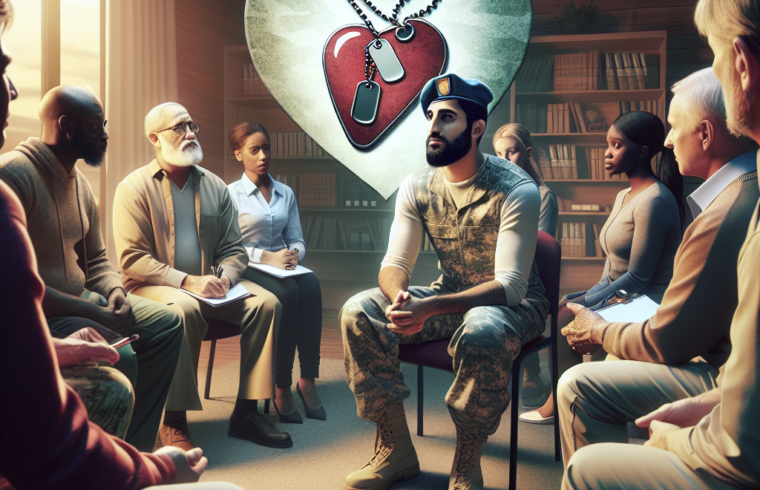Combat Stress and Mental Health
Understanding Combat Stress
From my perspective, combat stress is a heavy burden that veterans often carry long after their service has ended. It’s more than just a tough day at the office; it’s a constant reminder of their time in the field. Combat stress can manifest in many ways, from anxiety and depression to PTSD and other mental health issues.
==> Thank you for reading this post! Click Here If you are looking for support and Victory over PTSD.
I’ve seen firsthand how combat stress can affect veterans. They struggle with triggers that remind them of their service, whether it’s a loud noise resembling a gunshot or a crowd that feels too similar to a combat zone. These triggers can make everyday life challenging.
Addressing combat stress head-on is crucial. It involves more than just acknowledging it; we need to provide veterans with the right tools and resources to manage it. Therapy, support groups, and coping strategies can all play significant roles in helping them navigate this difficult terrain.
Importance of Early Intervention
Time and again, early intervention has proven to be a game-changer for mental health. When it comes to veterans, catching the signs of combat stress early can make a world of difference. It’s like catching a snowball before it becomes an avalanche.
Veterans often hesitate to seek help due to stigma or a sense of pride. Encouraging them to reach out sooner rather than later can prevent minor issues from snowballing into major problems. It’s about creating a culture where seeking help is seen as a strength, not a weakness.
In my experience, once veterans take that first step, they often experience relief. It’s like a weight being lifted off their shoulders. Knowing there’s a lifeline available can provide much-needed hope and facilitate the healing process.
Providing Ongoing Support
Emotional support for veterans isn’t a one-time thing; it’s an ongoing necessity. Life after service is a journey filled with ups and downs, and continuous support can make all the difference. It’s like having a steady hand to hold through a rollercoaster ride.
Ongoing support can come in many forms – regular therapy sessions, support groups, or even just checking in with a friend. The key is consistency. Veterans need to know that support is always there, ready and available whenever they need it.
I’ve found that building a reliable network of support is like constructing a safety net. It catches veterans when they fall and helps them get back on their feet. This stability is essential for their well-being and facilitates a smoother transition into civilian life.
Integration into Civilian Life
Navigating Employment Challenges
Transitioning from military to civilian employment can be a daunting task. Veterans often find it challenging to translate their military skills and experiences into civilian job terms. It’s a whole different ball game, and understanding the rules is crucial.
From what I’ve seen, providing career counseling and job placement services tailored to veterans can be incredibly beneficial. It helps bridge the gap between military and civilian worlds, making the transition smoother. It’s like having a map in an unfamiliar territory.
Moreover, educating employers on the unique strengths and skills veterans bring to the table can also make a difference. Many companies may not even realize the value veterans can add to their workforce.
Building a New Identity
After dedicating a significant part of their lives to the military, veterans might struggle with forming a new identity in civilian life. It’s like starting a new chapter, and sometimes it can feel like they’re starting from scratch.
Encouraging veterans to pursue hobbies, education, and other interests can help them build a new sense of self. It’s about finding passions and purposes outside of military service, and sometimes, this journey can be incredibly fulfilling.
Support groups and community organizations can play a pivotal role in this process. They provide a sense of belonging and offer a space where veterans can share their experiences and support each other in this identity-formation journey.
Re-establishing Social Connections
Military life is all about camaraderie and a close-knit community. However, once veterans return to civilian life, they might feel isolated and disconnected. Re-establishing social connections can be crucial for their well-being.
Engaging in community activities, joining veteran groups, or simply spending time with family and friends can help veterans reconnect socially. It’s about building a network that provides emotional support and a sense of belonging.
In my experience, social connections act as a lifeline. They offer veterans a support system they can lean on and share their experiences with. It’s like having a home away from home, providing comfort and companionship in times of need.
Building Strong Support Networks
The Role of Family Support
Family plays an indispensable role in a veteran’s life, offering a shoulder to lean on and helping them navigate through difficult times. From my experience, strong family support can significantly enhance a veteran’s emotional well-being.
Families should be encouraged to educate themselves about the challenges veterans face. Understanding these challenges can help them provide better support. It’s like being a team in a game where knowing the rules makes all the difference.
Family counseling and support groups can also be invaluable. They offer a space where family members can share their experiences, gain insights, and find ways to better support their loved ones.
Community and Peer Support
Communities can act as an extended family for veterans, providing a sense of belonging and support. Local organizations and peer support groups are vital in creating such environments.
From my perspective, community involvement can help veterans feel valued and connected. Whether it’s through volunteer opportunities, social events, or local initiatives, engaging in community activities can boost their morale and provide emotional support.
Peer support groups offer a unique form of support, where veterans can share their experiences and connect with others who have been through similar situations. It’s like having a circle of friends who truly understand what you’re going through.
Professional Support Networks
Establishing professional support networks, including mental health professionals and counselors, is crucial for veterans. These professionals offer expertise and guidance that can be life-changing.
From my perspective, having access to professional support can significantly enhance a veteran’s quality of life. It’s like having a personal coach who can guide you through the rough patches and help you come out stronger on the other side.
Moreover, creating partnerships between veteran organizations and mental health services can facilitate better access to these professionals. This collaboration can ensure veterans receive the holistic support they need.
Access to Professional Help and Therapies
The Importance of Counseling
Counseling can be a cornerstone in the recovery process for many veterans. It offers a safe space to discuss their experiences, fears, and challenges without judgment. From what I’ve seen, this form of professional support can be incredibly healing.
Therapists who specialize in working with veterans understand the unique challenges they face. They can provide tailored approaches that address specific issues, such as PTSD or anxiety, enabling veterans to manage their symptoms more effectively.
Furthermore, counseling can help veterans develop coping strategies to handle stress and emotional difficulties. It’s akin to having a toolkit equipped with all the necessary tools to navigate life’s ups and downs.
Benefits of Group Therapy
Group therapy brings together veterans who share similar experiences, fostering a sense of community and mutual support. In my experience, this collective healing can be incredibly powerful.
Sharing stories and hearing others’ experiences can provide validation and relief. It’s like realizing you’re not alone in your struggles, which can be incredibly comforting and therapeutic.
These groups often form strong bonds, providing a steady support network. Participants can rely on each other for emotional support, advice, and understanding, creating a resilient community.
Innovative Therapies
In recent years, innovative therapies have emerged that offer new ways to support veterans’ mental health. Techniques such as art therapy, equine therapy, and virtual reality therapy can provide alternative routes to healing.
Art therapy, for instance, allows veterans to express their emotions creatively, offering a non-verbal outlet for their feelings. Equine therapy, involving interactions with horses, can be incredibly calming and therapeutic.
Virtual reality therapy is another exciting development, allowing veterans to confront and manage their triggers in a controlled environment. These innovative approaches can be tailored to individual needs, providing diverse options for support.
FAQ about Why Emotional Support for Veterans Is Essential
1. Why is early intervention crucial for veterans struggling with combat stress?
Early intervention helps to catch and address mental health issues before they escalate, providing veterans with the tools to manage stress effectively and paving the way for quicker recovery.
2. How can families support veterans in their transition to civilian life?
Families can play a vital role by educating themselves about the challenges veterans face, offering emotional support, and participating in family counseling and support groups.
3. What are the benefits of group therapy for veterans?
Group therapy provides a sense of community, allows veterans to share their experiences and receive support from peers who understand their struggles, and fosters strong, supportive bonds.
4. Why are professional support networks important for veterans?
Professional support networks offer specialized guidance and expertise, helping veterans navigate mental health challenges effectively and improving their overall quality of life.
Original Source











